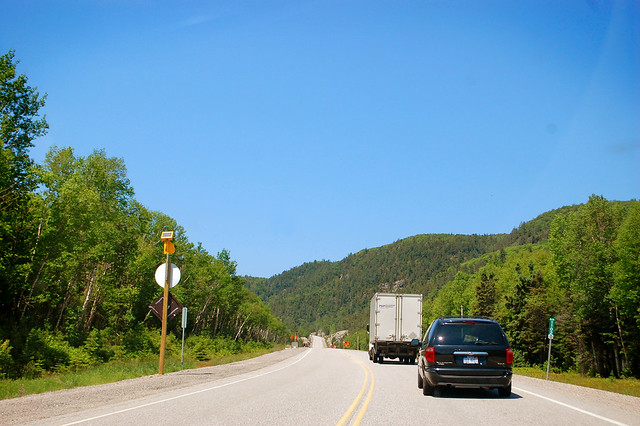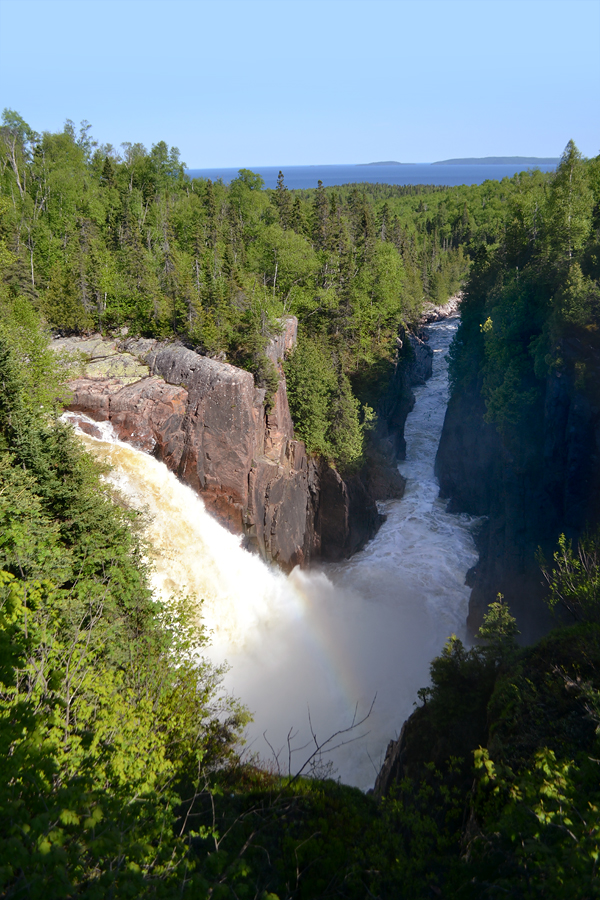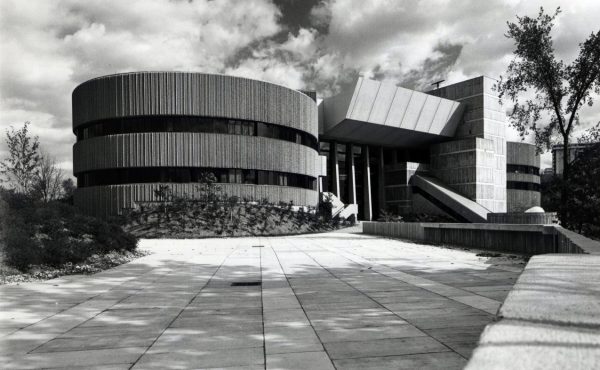
To coincide with the launch of Spacing’s first national issue, the magazine presents the Spacing Road Show, a tour of 10 Canadian cities this summer. In each city Spacing will host an event with a panel discussion and party. The western swing of the Road Show takes place between June 16-to July 5. The eastern Canada jaunt runs from July 19-25. The Spacing Road Show is sponsored by BMO SmartSteps for Homeowners and supported by Autoshare and the Canada Council for the Arts.
PLEASE NOTE THAT THERE IS AN EVENT IN SASKATOON TONIGHT
![]()
WINNIPEG — After 24 hours of driving through Ontario over a three day period, I finally set foot in Winnipeg. I arrived a few days in advance of the first Spacing Road Show event (last Thursday) so I could get the blood running through my legs once again. Tomorrow (hopefully) I’ll give a short report on the event and some of the things I saw while in Winnipeg, but I thought I’d give a little insight into my trek just to get out of Ontario.
I left on a very bright afternoon last Sunday (June 12th). I chose to make this a road trip for a number of reasons, but primarily because I had to bring a lot of things with me for the events (large format signs, display racks, merchandise, my own luggage, and 1,000 copies of the magazine — the entire trunk is packed with boxes of Spacing). Another motivation was that I’d never driven across western Canada and I really wanted to experience the enormity of the country firsthand.
Before I left Toronto, I made sure to purchase a bike rack that attaches to the trunk of the car. I’m spending a large percentage of this trip sitting in the same position for long stretches so I need all the exercise I can get. And in most cases, the cities I’m visiting are flat and rather small in size compared to Toronto, making it easy to get around on two wheels.
My first day on the road took me up highway 400, then up highway 69 to Sudbury. It had been over a decade since I had been further north than Parry Sound and I was soon reminded about the French influence in central and northern Ontario when I saw street signs around Sudbury displaying “Ch.” for chemin (road). I then went west on highway 17 — my travel guide for the next 1,500km — and landed in Sault Ste. Marie for night.

In the morning of Day 2, I briefly checked out the Soo’s downtown (shown above). The main drag is Queen St. and runs for almost two kilometres. The whole stretch has a good variety of human-scaled commercial buildings while the sidewalks housed plenty of really tall and mature trees (I’m poor at identifying tree species). And like most cities I’ve experienced on this trip, the core of the city is full of one way streets.
Queen Street wasn’t bustling at 9am, but I was quite charmed by my brief encounter. It didn’t hurt that it had a tremendous espresso shop called Dish (as a side note, all of the mid-size cities I’ve encountered to date are home to espresso shops and all of them had locals sipping on americanos and lattes. Does this mean the city-bashing metaphor is nearing its end?).
The drive north of the Soo is, by far, one of my favourite stretches in Ontario. Lots of ridges dropping sharply into Lake Superior and loads of twisting roads. It was on this stretch back in 1994, on my way to Kenora for a vacation, that I was shocked to see a moose trotting along the road. I was hoping for another encounter, and it kinda did happen: I came around a turn about an hour north of Wawa and saw a car parked on the shoulder. I slowed down to see if they were experiencing car trouble but instead saw the driver leaning out of his car taking photos of a young bull moose a few metres from the road. I pulled over as well and tried to get my camera out quickly, but by the time I was out of the car the moose had trotted back into the thick brush (the photo below is NOT mine but almost exactly what I saw — photo by JC-Pics).


As highway 17 winds its way west along the northern shore of Superior, some of the most stunning vistas suddenly appear. There are some views of Nipigon Bay that made me howl with delight. I stopped at Aguasabon Falls for a few photos (shown above) and was surprised by its size (110 feet).

I stuck to my plan to drive about 700 kilometres a day, which landed me in Thunder Bay for my second night of sleep. On my way to the hotel I cut through the middle of Thunder Bay and passed Hillcrest Park. I stopped quick as it offered a stunning view of the city’s bay and Sleeping Giant Provincial Park at sunset. I was able to come back in the morning and take a series of photos (not shown) that I will stitch together into a 180-degree panorama once I get home in a few weeks.
On Day 3, I headed northwest from Thunder Bay, through Dryden and Kenora. So far on my trip, this 500km stretch has felt like the most remote area in the country with only a few villages and really sparse service towns. I was more than happy to arrive mid-afternoon in Kenora, which also happened to be a few hours before a Beach Boys concert (!). The town was a traffic nightmare but the sidewalks were full of strolling baby boomers who were popping in and out of stores along the main downtown drag, all of which had “Welcome Beach Boys” signs attached to the front windows. Within minutes of getting out of my car, I was stopped by a local TV crew who wanted to know if I had come into Kenora for the concert. They politely listened to my story of how the Beach Boys were actually my first concert ever in 1983 at the now demolished CNE grandstand. Once I said I was just stopping in town to buy sunglasses they quickly ran off.
Thirty minutes later I had finally exited Ontario. Once I entered Manitoba the landscape quickly changed from green and rocky to flat and more flat. After spending days hardly ever encountering a traffic light, I arrived in Winnipeg right in the middle of rush hour.
NEXT UP: Hay Hay, Winnipeg!
![]()
The Spacing Road Show is sponsored by BMO SmartSteps for Homeowners and supported by Autoshare and the Canada Council for the Arts.





